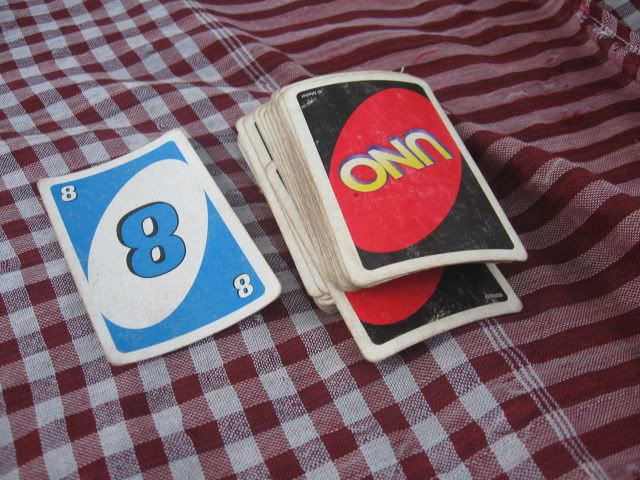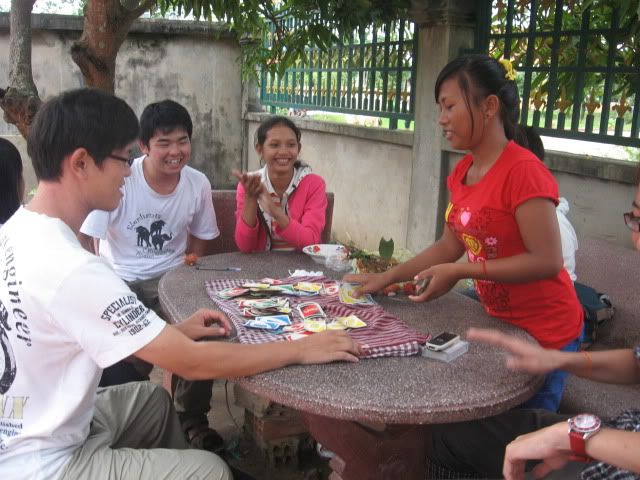
What will happen around the table having diverse ethnicities playing UNO? For now, that’s the question I’d like us to wonder about.
I just got back from a flooded-village-day away one drizzly afternoon. And before I had my tired body settled on a bench, one of the teachers informed “The Japanese students are coming to play uno with us.” I wasn’t that thrilled at first, so just ended up commenting “Let’s play, then!”
As we waited for their coming, suddenly my mind was preoccupied with few wonderings. None of us (as hosts) was quite sure how the game is going to be – an interesting one or unanticipated one.
It was not my first time playing uno with other heritages – well, with native speakers of English. And so we had common ground at least – one language, one rule, one game in the name of English.
But this time it was very different. Players were totally from three opposite sides of Asia – Khmers, Japanese and a Filipino. Since I am the oldest myself, I stood as an initiator bringing on the table the rules we have back home. Unfortunately there was no common rule except for one thing… a common laughter because of diversity in contexts.

I follow the western context based on the manual’s procedures and rules. And of course, plus the self-invented rules I inherited from Filipino friends I played for many years – the high 5 and the stealing things.
My Khmer kids could have had their own rules as well if they first played uno among their set of friends. Sad to say they learned the game from me. So they are accustomed to the same rules I follow. But at least they know how to change some rules and make them more relevant to their own context – no need to mention a few.

The Japanese rules on the other hand are totally different but not for the accustomed. If one had to translate their rules into black and white, I don’t think I could find one similarity - except that a color is a color and number is a number.
All in all is very diverse: a player cannot throw a card outside a file; one has to win the rock-scissors-paper thing to start the game; anybody can throw the same number cards at one time like all 2s regardless of colors; that every card counts, if one throws 4 skips or reverses then it has to be skipped or reversed four times too; if one throws a +4 the next person can throw +2 to add amounts of a punishment; and a lot more. But not a single rule is transcribed in my own list of rules.
Yet we managed to play the game happily by adjusting and being opened to other rules unaccustomed. We started with negotiation by playing someone’s known rules. And then we continued playing observing another’s known rules. And when we got bored a bit, we mixed all the rules although confusing and challenging at times.
In short, we had a tremendous fun!
We ended up laughing at our diversities instead of criticizing them. It was just a respect a way, in fact. Then we had an honest-to-goodness game by miles at the end of the day.
The bargaining (about whose rules we must follow first) turned in a wonderful experience for all of us. We didn’t need to argue to put our own rules into domination. We can bargain as we tried to do in shopping. Try it! It’s possible.
In span of short time, we got to know each heart and mind more than just playing – thanks to uno.
And also we ended up learning new things. I like the dealing part where a dealer serves the players with special treatments - it taught me servanthood attitude.
Above all, we played happily with bright smiles on our faces – an unforgettable moment to cherish.
Going back to the question above, I think I’ve said it all. But what’s yours?
Enjoy playing uno!



No comments:
Post a Comment